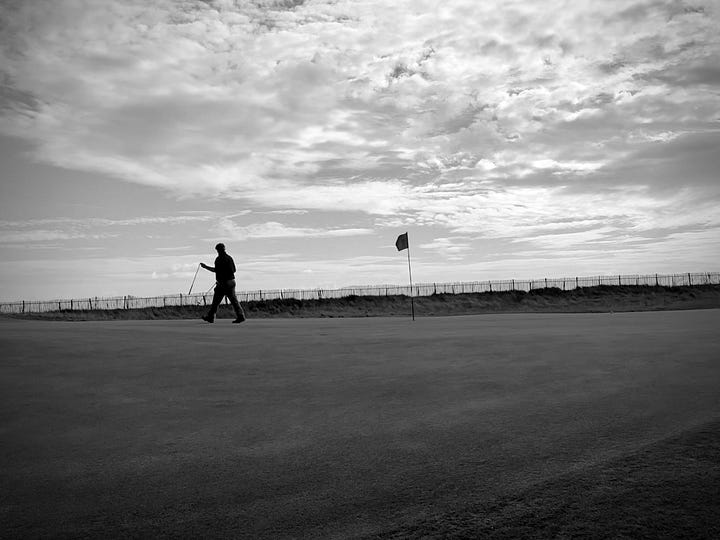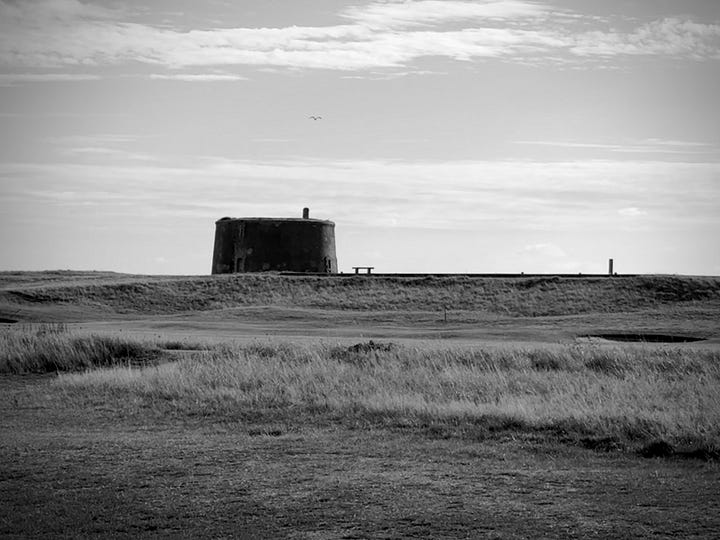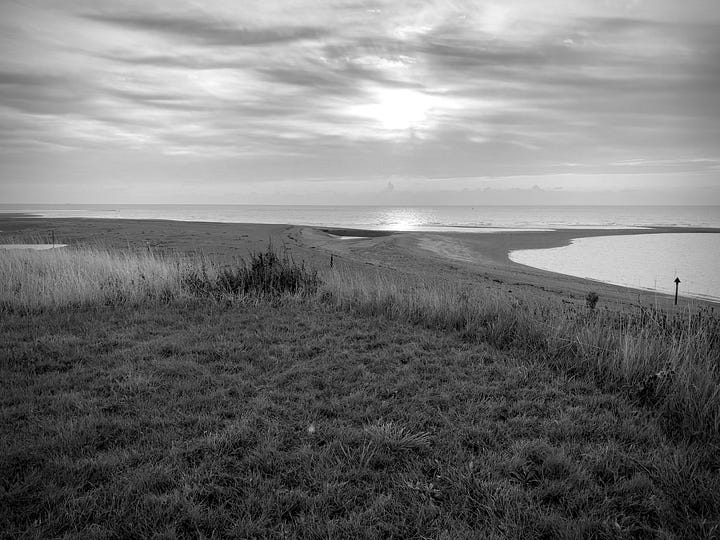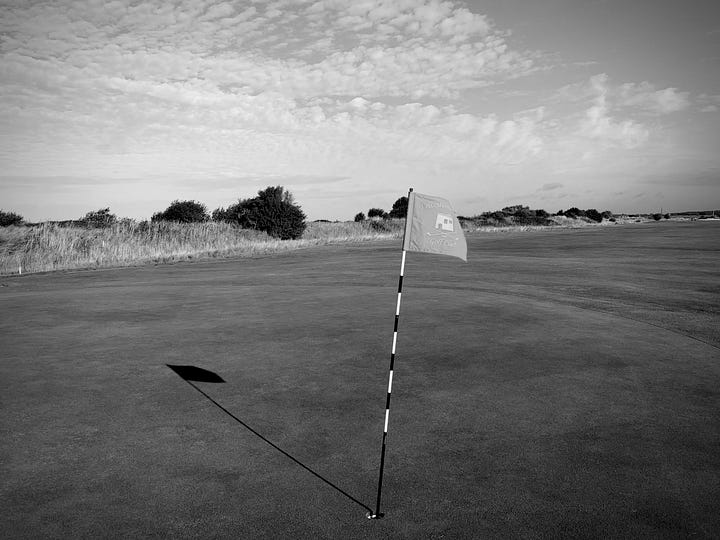



“Who controls the past, controls the future: who controls the present, controls the past…”
George Orwell, from Nineteen-Eighty-Four
We’re a stubborn race, we golfers. But perhaps none are quite so stubborn as the Felixstowe golfer, for circumstance has thrown almost everything at them over time, and yet on they march. Founded in 1880, the club was the result of a burst of pioneering from that famous sect of Wimbledon players, desperate for some seaside golf to remind them of Scotland and save them the difficult journey to either Westward Ho! or Hoylake.
Messrs Lamb and Purves were enlisted as founding members at Felixstowe, just a few years before the latter spied the dunes for their Royal St George’s out of a church window in Sandwich. But the driving force behind this venture would be Lord Elcho, who the club’s history describes as “a fiery and formidable gentleman”, noting that he played with vigour from the age of fourteen until he was just ninety-two, latterly riding a chestnut cob between strokes. He organised the opening matches over a basic loop of nine, then took the London Scottish professional Tom Dunn to Suffolk to develop the course, Dunn’s eighteen hole routing opening in early 1881.
Elcho’s determination found a powerful ally in local land-owner Colonel George Tomline, who had founded the nearby port and - importantly for the golfing population - the Felixstowe Railway & Pier Company. Felixstowe was and is “the end of the line”, as my playing partner Tim reflects strolling down the first fairway, but Tomline’s railway had put it in touch with Ipswich and therefore London.
Since then, both club and course have suffered an extraordinary ride of twists and turns from their perch on the edge of this delicate coastline. By the time World War One broke out, Dunn’s course was down to just nine holes, having been chopped around due to safety concerns as the inland golfers flocked to this glorious spot.
The course then became “a scene of desolation” as a wartime rifle range, and the Walton Heath professional and five times Open Champion James Braid was brought in to rebuild the course, though his efforts were blighted by both financial issues and periodic flooding of the links. As Europe prepared for another war in the late thirties, the links once again became deployed for battles greater than golf, with pill boxes and munitions positioned facing east.
The members had long moved out of the Napoleonic Martello Tower that still dominates the landscape, but the subsequent clubhouse, East End House, was taken over for soldiers, and though they would get its linksland and property back when the war ended, the reconstruction of a course by Henry Cotton and Sir Guy Campbell found further trials ahead. Flooding in March 1949 delayed the official opening, and the course was subject to regular, fierce storms and coastal erosion for the following decades, which claimed a good chunk of the golf east of the Tower, including the entire six hole ladies course and clubhouse.
The impetus for this trip was threefold. Firstly, an excuse for the latest biannual rendezvous with Tim, after blissful previous games at Flempton and New Zealand. Secondly, in relation to New Zealand, a chance to explore the role here of that club’s early Managing Director, Samuel Mure Fergusson - who had been Felixstowe’s Captain in 1891, an honour he would later assume at Royal St George’s, Guildford and the R&A. But the third reason was perhaps almost as compelling as the first two, for a friend from Royal Wimbledon (Chris, that’s you; thank you!) had made the same journey about two years earlier, and had reported back that “it had character, Martello Towers and was real”. After years of camping between Pevensey and Norman’s Bay, Chris’s guidance had me hooked at the mention of the Towers…
From the first tee, Felixstowe’s character is laid bare in a fine opening par four whose fairway drops down the hill before climbing gently past the left hand bunkers to a green cut into a right hand bank. Probably named “Orwell” for Orwell Park where Tomline and Elcho first met rather than for George, who spent a great deal of time up the road at Southwold, it is a taste of what is to come with fine, running turf and attractive yet deadly bunkering. And the second - “Elcho” after the founding President rather than his son and later Captain - continues the links feel with another testing hole that swings a little right from the drive, the approach guarded by a couple of foreshortening bunkers in the fairway and another on the right of the long, narrow green.
It is a strong start, and though the modern course turns inland from that point, the next ten holes make the most of the land they occupy, with a few ditches and further good bunkering adding interest to the flat terrain. But the initial, intoxicating taste of the seaside holes doesn’t go away, and so it is with some degree of excitement that one safely navigates the par three twelfth in front of East End House, winds around behind the first tee, and pushes a peg into the thirteenth for what ends up being a thrilling final third to the course. At a little over three hundred yards, this hole ought to be easy, but the combination of a tight green and a following wind prove more than I can cope with, and I discover a tough spot in a hollow beyond the green, attracting sympathetic glances from the group walking off the adjacent seventeenth.
From there, we circle round the Martello Tower, in which I gather some ancient honours boards are languishing, to the dogleg fourteenth. With its nine bunkers and undulating fairway, it is reminiscent of several of the holes at Deal, and we both misjudge our approaches as a result of the craftily hidden trough that separates a band of three pot bunkers from the front edge of another devilish target. From there, we track back to the fifteenth tee, tucked under a hazel fence behind which the River Deben winds its way towards the Ferry after which the golf club is named. Up at the green, a deep, mown hollow on the left mirrors a right hand bunker, and our golf balls run up and back down the embankment behind the green, where the ground rises to the impossibly elegant Mariners Lodge.
At the sixteenth tee, we are left in no doubt as to how the prevailing wind affects golf in this part of the world. The scorecard says 204 yards, and nearly flies off behind me at this rare exposure to the brisk breeze, but it might as well be a mile today, and when I later look at Felixstowe’s website, the instruction is that “you are better off just short, rather than long”. Luckily for me, long is not an option with either my game or equipment, but there seems to be no advice for finding yourself almost pin high but eighty yards left.
How the seventeenth can claim to be a par four in today’s conditions is beyond me, as is the green, but somehow Tim and I scramble fours with fine recoveries, and head to the final hole elated by this miracle. Once more, a green awaits with some menacing hazards for company, and it is clear as we climb the hill that the new clubhouse - under construction for opening next spring - will enhance the already tangible sense of coming home over the final stretch. It’s as if - despite all the travails endured over its long history - the modern Felixstowe experience consists of two-thirds very good holes in order to earn the right to play these half a dozen sensational ones as a miniature out-and-back loop to conclude. It’s “real”, alright.
We shake hands, and find a welcome in both bar and office as warm as that which the splendid course offers, and are pleased to see the heritage so much a part of the development work currently in progress. Along with the new clubhouse will be delivered five new houses, each bearing a name from the club’s historical roots including that of Darwin, who played here as a child and wrote fondly of it from that moment on. And somehow this latest project feels so very positive for the club, and I am glad - glad that it is still here, and thriving, and glad that it is - by taking control of the present, paving the way for a long and prosperous future. Those Felixstowe golfers have certainly earned it.
So if this is “the end of the line”, I’m buying a ticket. I can hardly wait to return…



Its been ‘on my list’ for over a decade…..now we have a ‘date TBC’ invitation to Aldeburgh, I shall be sure to add FF into that excursion to south east Suffolk
Martello Towers have quite a presence, don't they?